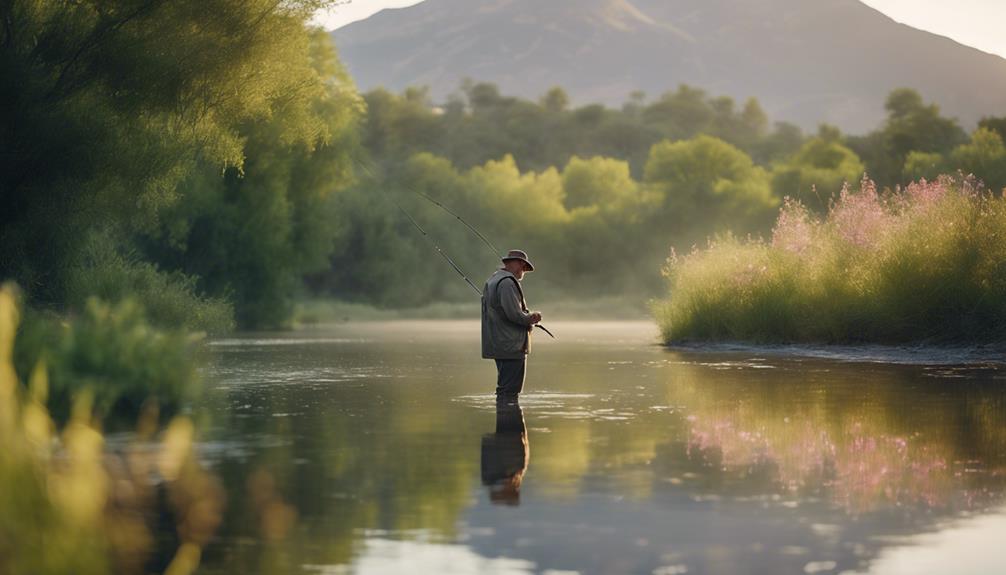Fly fishing is an age-old practice that draws enthusiasts to some of the most breathtaking landscapes. Among these, Vermont stands out as a premier destination for fly fishing lovers. Renowned for its lush green mountains, crystal-clear rivers, and diverse fish species, Vermont offers an unforgettable fishing experience. In this guide, we will explore the ins and outs of fly fishing in Vermont, including the best locations, techniques, gear recommendations, and more.
Why Choose Vermont for Fly Fishing?
Vermont is a fly fishing paradise, boasting over 7,000 miles of rivers and streams, along with numerous lakes and ponds. The state’s pristine waters are home to a variety of fish species, including brook trout, rainbow trout, brown trout, and landlocked salmon. The state’s commitment to conservation ensures healthy fish populations, making it a sustainable destination for anglers. Additionally, the stunning scenery, with its rolling hills and vibrant foliage, provides a picturesque backdrop for your fishing adventures.
Best Fly Fishing Locations in Vermont
When it comes to fly fishing Vermont, certain locations stand out as must-visit spots. The Battenkill River, often referred to as one of the best trout rivers in the East, offers ample opportunities for both novice and experienced anglers. Its clear waters and abundant insect life create an ideal environment for fly fishing. Other notable spots include the Winooski River, the Otter Creek, and the White River, all of which provide diverse fishing experiences. Each location has its unique charm and challenges, making it worthwhile to explore multiple waters during your Vermont fishing trip.
Understanding Vermont’s Fishing Seasons
Timing is crucial for successful fly fishing in Vermont. The fishing season typically opens on the second Saturday in April and runs until the last day of October. However, different species have varying peak times. For instance, brook trout are most active during the spring, while late summer and early fall are ideal for targeting brown trout. Knowing the seasonal patterns of fish behavior and the corresponding hatches will significantly increase your chances of landing a big catch. Always check the Vermont Fish & Wildlife Department’s regulations for specific dates and restrictions.
Essential Fly Fishing Gear for Vermont Waters
Having the right gear is vital for a successful fly fishing experience in Vermont. A lightweight fly rod paired with a matching reel is ideal for navigating the diverse waters. Fly lines should be selected based on the species you’re targeting; weight-forward lines are often effective for casting larger flies. Don’t forget to bring a variety of flies, including nymphs, dry flies, and streamers, as Vermont’s fish respond to different patterns throughout the year. Additionally, waders are essential for accessing deeper waters and ensuring your comfort while fishing.
Techniques for Successful Fly Fishing in Vermont
Mastering various fly fishing techniques is key to success in Vermont’s diverse waters. One effective method is “match the hatch,” which involves observing and replicating the insects present in the water. This ensures that your flies mimic what fish are naturally feeding on. Additionally, learning how to effectively cast, mend your line, and present your fly can make a significant difference. For stream fishing, consider using a technique called “tight line nymphing,” which allows for better sensitivity to strikes in fast-moving waters. Practice these techniques to enhance your fly fishing skills.
Conservation and Ethical Fishing Practices in Vermont
When fly fishing in Vermont, it’s essential to prioritize conservation and ethical fishing practices. Vermont is known for its commitment to preserving its natural resources, and as anglers, we play a vital role in this effort. Always practice catch and release when targeting certain species, especially during spawning seasons. Adhering to local regulations regarding size and bag limits is essential. Additionally, be mindful of your environmental impact—clean up after yourself and minimize disturbances to wildlife and their habitats.
Local Fly Fishing Guides and Resources
For those looking to enhance their fly fishing experience in Vermont, hiring a local guide can be incredibly beneficial. Experienced guides can provide valuable insights into the best spots, techniques, and seasonal patterns. They can also help beginners learn the ropes or assist seasoned anglers in refining their skills. Numerous local fly shops and guide services offer tailored experiences, ensuring you get the most out of your trip. Don’t hesitate to reach out to these professionals for recommendations on the best areas and equipment.
Planning Your Fly Fishing Trip to Vermont
Planning a fly fishing trip to Vermont involves more than just packing your gear. Consider the time of year, as well as the specific waters you wish to explore. Accommodations range from rustic cabins to luxury hotels, catering to various budgets. Researching local regulations and obtaining the appropriate fishing licenses is also crucial. Finally, be sure to take advantage of Vermont’s other outdoor activities, such as hiking, biking, and exploring quaint towns, to make the most of your adventure.
In conclusion, fly fishing in Vermont is an experience that combines skill, patience, and a deep appreciation for nature. With its stunning landscapes, diverse waters, and thriving fish populations, Vermont has something to offer every angler. Whether you’re a novice looking to learn or an experienced fisherman seeking your next trophy, Vermont’s waters are waiting for you to cast your line. So pack your gear, plan your trip, and prepare for an unforgettable fly fishing adventure in the heart of the Green Mountain State!
